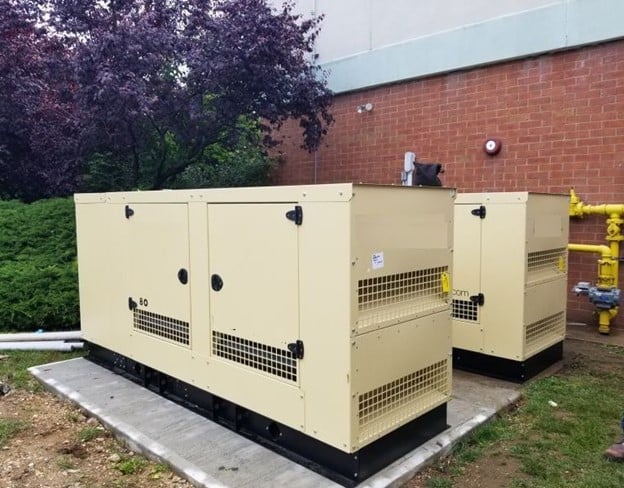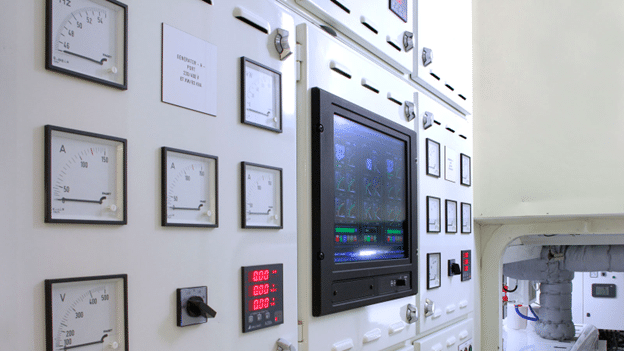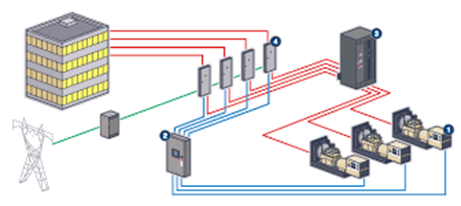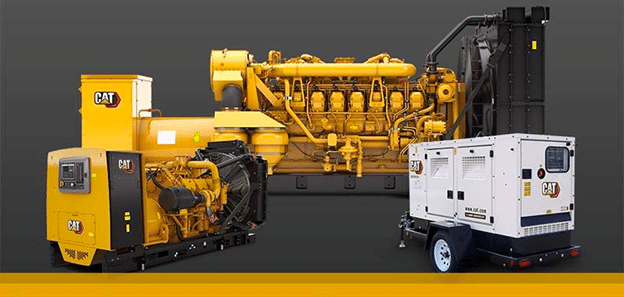Load sharing in power systems refers to the division of electrical power generated by multiple sources among different loads or consumers. Load sharing is a crucial aspect of power systems, as it ensures a balanced distribution of power, prevents overloading of generators, and increases the overall reliability of the system. In this article, we will discuss the fundamentals of load sharing in power systems, the different methods used for load sharing, and their advantages and disadvantages.
Fundamentals of Load Sharing
Load sharing in power systems is essential to ensure the efficient distribution of electrical power. A power system typically consists of multiple generators, each generating power to meet the total load demand. The generators are connected in parallel, and the power they generate is distributed to various loads. The loads may vary in terms of their magnitude and characteristics, and the generators need to be coordinated to ensure that they share the load in a balanced manner.
The primary objective of load sharing is to ensure that the generators work together to provide the total required power. However, the generators may have different ratings and efficiencies, and therefore, they may not generate power in proportion to their ratings. Load sharing control systems are used to balance the power generated by the generators and to ensure that each generator operates within its rated capacity.
The load sharing control system works by continuously monitoring the power generated by each generator and adjusting the load on each generator to maintain a balanced distribution of power. The load sharing control system uses various sensors and control algorithms to measure the power generated by each generator, calculate the load on each generator, and adjust the load on each generator to maintain a balanced distribution of power.
Methods of Load Sharing
There are several methods of load sharing in power systems. The most common methods are discussed below:
1. Droop Control Method:
The droop control method is a simple and effective method of load sharing in power systems. In this method, each generator is equipped with a droop control system that regulates the generator’s output frequency. The output frequency of the generator decreases as the load on the generator increases. The droop control system ensures that the power generated by the generator is in proportion to the generator’s rating.
The droop control system works by measuring the output frequency of the generator and adjusting the load on the generator to maintain a constant frequency. The droop control system provides a proportional response to changes in load, and therefore, it ensures a balanced distribution of power among the generators.
The droop control method has several advantages, including simplicity, low cost, and good transient response. However, the method has a limited accuracy in load sharing, and it may not work well with nonlinear loads.
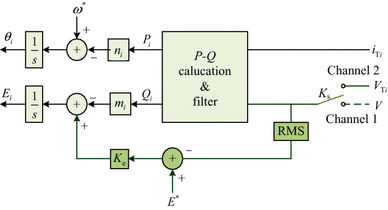
2. Frequency Bias Method:
The frequency bias method is another method of load sharing in power systems. In this method, each generator is equipped with a frequency bias controller that adjusts the generator’s output frequency based on the power output of the generator. The frequency bias controller ensures that the power generated by the generator is in proportion to the generator’s rating.
The frequency bias controller works by measuring the power output of the generator and adjusting the output frequency to maintain a constant power output. The frequency bias method provides a precise response to changes in load, and it works well with nonlinear loads.
The frequency bias method has several advantages, including high accuracy, good stability, and good response to changing loads. However, the method is more complex than the droop control method and may be more expensive.
3. Active Power Control Method:
The active power control method is a more advanced method of load sharing in power systems. In this method, each generator is equipped with an active power controller that regulates the power output of the generator. The active power controller ensures that the power generated by the generator is in proportion to the generator’s rating.
The active power controller works by measuring the power output of the generator and adjusting the load on the generator to maintain a constant power output. The active power control method provides the most precise response to changes in load and works well with both linear and nonlinear loads.
The active power control method has several advantages, including high accuracy, good stability, and good response to changing loads. However, the method is more complex than the droop control method and the frequency bias method, and it may be more expensive.
4. Adaptive Load Sharing Method:
The adaptive load sharing method is a more sophisticated method of load sharing in power systems. In this method, each generator is equipped with an adaptive load sharing controller that adapts to the characteristics of the load and the generator. The adaptive load sharing controller ensures that the power generated by the generator is in proportion to the generator’s rating and the load characteristics.
The adaptive load sharing controller works by measuring the power output of the generator, the load characteristics, and the characteristics of other generators. The adaptive load sharing controller then adjusts the load on the generator to maintain a balanced distribution of power among the generators.
The adaptive load sharing method has several advantages, including high accuracy, good stability, and good response to changing loads and generator characteristics. However, the method is the most complex and expensive of all load sharing methods.
Advantages of Load Sharing
Load sharing in power systems has several advantages, including:
- Increased reliability: Load sharing ensures that the power generated by multiple generators is distributed among different loads, thereby preventing overloading of any single generator. This increases the overall reliability of the power system.
- Improved efficiency: Load sharing ensures that the generators operate at their optimal capacity, thereby improving the efficiency of the power system.
- Cost savings: Load sharing reduces the need for backup generators, thereby reducing the cost of power generation.
- Improved power quality: Load sharing ensures that the power generated by the generators is distributed in a balanced manner, thereby improving the quality of power delivered to the loads.
Disadvantages of Load Sharing
Load sharing in power systems has several disadvantages, including:
- Increased complexity: Load sharing requires the use of sophisticated control systems, which increases the complexity of the power system.
- Increased cost: Load sharing requires the use of sophisticated control systems, which increases the cost of the power system.
- Reduced stability: Load sharing may reduce the stability of the power system, especially in situations where there are fluctuations in the load demand.
Conclusion
Load sharing is an essential aspect of power systems, as it ensures a balanced distribution of power, prevents overloading of generators, and increases the overall reliability of the system. The different methods of load sharing include droop control, frequency bias, active power control, and adaptive load sharing. Each method has its advantages and disadvantages, and the choice of method depends on the specific requirements of the power system. Overall, load sharing is a critical component of power systems and plays a significant role in ensuring the efficient and reliable distribution of electrical power.
Introducing a load sharing solution provider in Texas:
If you’re looking for a reliable load sharing solution provider for your power system in Texas, look no further than Holt CAT. With years of experience in the power systems industry, Holt has a proven track record of providing high-quality load sharing solutions for a wide range of applications. Their team of expert engineers and technicians are dedicated to designing, installing, and maintaining load sharing systems that are customized to meet the specific needs of their clients. Whether you’re looking for a simple droop control system or a more advanced adaptive load sharing solution, Holt CAT has the expertise and resources to get the job done right.
Buy Equipment or Ask for a Service
By using Linquip RFQ Service, you can expect to receive quotations from various suppliers across multiple industries and regions.
Click Here to Request a Quotation From Suppliers and Service Providers

